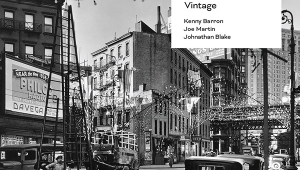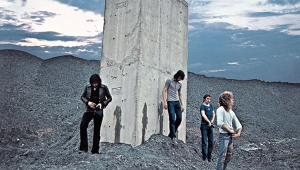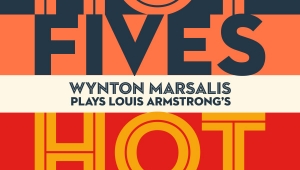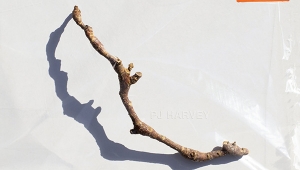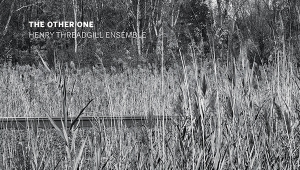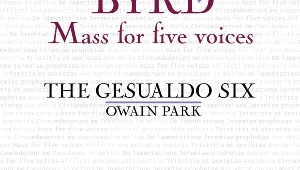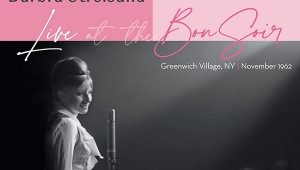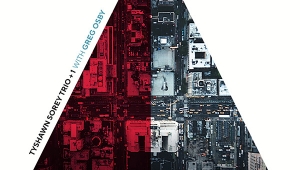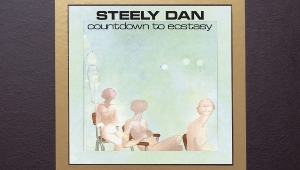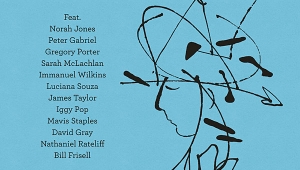| Columns Retired Columns & Blogs |
Recording of February 1989: Rameau: Works for Harpsichord
 RAMEAU: Works for Harpsichord
RAMEAU: Works for HarpsichordAlbert Fuller, harpsichord
Reference Recordings RR 27 (LP), RR 27-CD (CD*). J. Tamblyn Henderson, Jr., prod.; Keith O. Johnson, eng. AAA/DDD. TTs: 57:45, 63:57*
I have to admit that I gave Reference Recordings' last Baroque release somewhat short shrift: I was disappointed enough in the performance that even KOJ's usual superb recording was insufficient to redeem things. Here, however, Albert Fuller (who was also present the last time out) is in fine fettle, giving as good an account of these works as we could wish. Clearly he is more sympathetic to Rameau than he seemed to be toward Bach; the French emotionalism of the former is apparently more in accord with the performer's personality. I still enjoy the rendition given by a young Trevor Pinnock in the mid-'70s (Vanguard VSD 71271), and you will find the roots of Fuller's style on the old Bach Guild releases of Gustav Leonhardt, but the present recording stands on its own merits musically and is orders of magnitude better sonically than any of the previous versions. Fuller also sticks to real English in his liner notes, which he most emphatically did not do on the previous RR disc.
Of all the later Baroque writers for keyboard, Rameau is probably the most likely to appeal to the general listener; the emotional content of his works is closer to the Romantic spirit, and his complex figurations will satisfy those who appreciate pure virtuosity. For reasons which will become obvious in a moment, this recording carries the highest possible recommendations for audiophiles.
Out of courtesy to Reference Recordings, I wanted to compare the LP and CD versions of this release on the best possible equipment. My thanks go to Jack Rubinson of Chestnut Hill Audio for making this possible. Analog front end was the VPI TNT 1/ET II/Spectral MCR 1, feeding a Spectral DMC 10 preamp. Digital front end consisted of the digital output from a Mod Squad Prism into the Theta DS Pre (combined D/A converter and preamp). A Spectral DMA 50 power amp drove Merlin 4B+ and Vandersteen 2C speakers. Interconnects were MIT, and speaker cable was LiveWire and Audio Research. Levels were carefully matched, and the tape-switching facilities of a Mod Squad Line Drive (sans volume control) were used to enable easy switching between sources.
Not to keep you in suspense any longer, the digital was the clear winner. Yes, you read that right. I am no digiphile, and I have steadfastly remained unamazed by CDs (although freely admitting some to be superb), but I heard what I heard. Two aspects of the CD sound set it apart from the LP: transients were sharper and more like those of a live harpsichord recital, and the low digital noise floor preserved more of the low-level detail of the performance (although KOJ's microphones do produce a fairly high hiss level of their own). Please spare me the usual accusations: yes, I have heard live harpsichord music, and that quite recently.
The genesis of this recording lay in a fortuitous observation by producer J. Tamblyn Henderson: walking around the harpsichord, he chanced to find a "sweet spot" where he heard the different registers of the instrument apparently suspended in space. It is this closeup perspective that he wished to recreate in the final recording, and he and Keith Johnson succeeded perfectly in this goal. In either format, this is one of the most remarkable harpsichord recordings I have ever heard; the digital advantage does not extend to spatial effects, where both CD and LP are equal and excellent.
I am not a hardware reviewer; nevertheless, I would like to speculate that components like the Theta DS Pre, which attack the problems of D/A conversion at the root, optimizing the conversion in the time domain, represent a significant breakthrough in digital sound. I am afraid that the "inevitable conclusion" of analog vs digital comparisons may have now switched round to the other side. In saying this, I have doubtless failed to endear myself to many in the high end who resolutely defend the superiority of the LP; so be it. I can only suggest that the reader employ open ears and mind in making a similar comparison, and I can only thank companies like Reference Recordings for continuing to make such comparisons possible, and allowing audiophiles freedom to choose between formats. Let me also stress as strongly as I can that recording technique is the primary determinant in sound quality: it is the care and concern for music shown by the Reference Recordings and Sheffields of the world that give us the superb records we all treasure.—Les Berkley
- Log in or register to post comments


